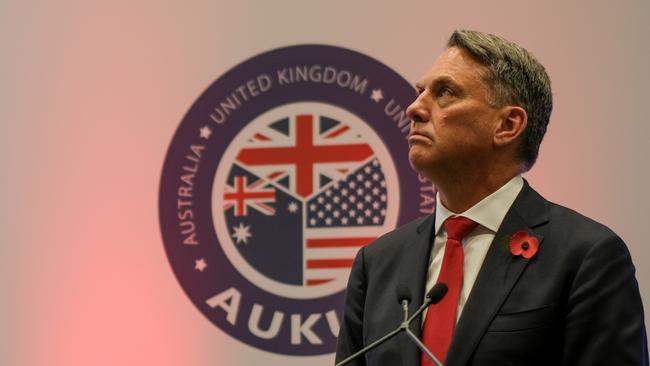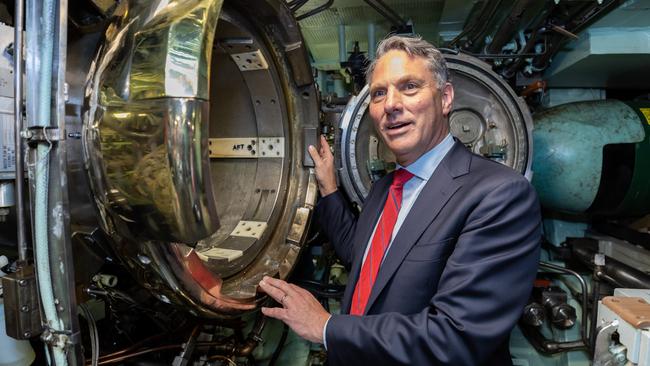Nuclear submarines jobs bonanza set out in Defence plan
South Australia’s defence industry will more than double to 8500 by the 2040s under a plan to bolster the nation’s workforce to service the AUKUS fleet of nuclear-powered submarines.

South Australia’s defence workforce will more than double to 8500 by the 2040s under a plan to service the AUKUS fleet of nuclear-powered submarines.
But the plan to train the AUKUS workforce is complicated by skills shortages and a competition for labour, giving ammunition to critics who argue it is not feasible for the nuclear submarines to be manufactured locally.
Defence Minister Richard Marles and SA Premier Peter Malinauskas will release a report on Friday outlining 22 initiatives to address workforce challenges. The report outlines a plan to engage 27,000 students and 1500 teachers across 180 SA schools to impart the science, technology, engineering and maths skills required to maintain the future fleet of nuclear submarines, which will be built in Osbourne in Adelaide.
As well as increasing SA’s defence personnel from 3500 to 8500 by the 2040s, the process of designing and building the submarine construction yard will employ 4000 workers at its peak and a further 4000 to 5500 direct shipyard jobs will be created to build the fleet.
Mr Marles, who is acting as Prime Minister while Anthony Albanese is in the Cook Islands for the Pacific Islands Forum, said the collaboration between defence, unions, the education and training sector and the federal and SA governments would underpin success.
“This report presents a comprehensive and methodical plan to grow, build and sustain the South Australian defence industry workforce, which is critical to delivery of SSN-AUKUS (nuclear-powered submarine fleet), continuous naval shipbuilding and our other defence projects,” he said.
“Some initiatives will leverage and expand on existing programs, building on substantial work already underway across government, defence industry and education and VET sectors. Other initiatives are new to help address identified skills gaps.”
Under the plan there will be 2600 additional opportunities for students to learn key skills through the VET system and university graduates to access pathways to the workforce through on-the-job, paid apprenticeships and a nuclear-powered submarine early careers program.
The 66-page report will detail the initiatives to grow the workforce from 2023-24 through to 2026-27 and provide a road map for the years after, noting that it will take time to build the skills and experience required.
The report says the nuclear submarines will be “unlike anything Australia has ever built”, and will require an increase in the capacity of the workforce.

“A comprehensive and integrated approach is required to upskill and retain our existing workforce while growing the pipeline across the learning journey – from primary school through to mid-career transitions,” the report says.
“We need more students studying science, technology, engineering and mathematics in primary and secondary school, and for them to continue the journey to become STEM-qualified graduates, tradespeople and professionals.” However, the report also flagged that establishing a skilled worker base and an “enduring pipeline” will not be easy considering the high competition for labour and existing workforce shortages.
Mr Malinauskas said the report would set out the path to create an “agile and highly-skilled local workforce equipped to execute Defence’s most complex projects”.
“Our critical national defence projects, inducing nuclear-powered submarines, will be delivered with the strength of a highly educated, highly trained workforce with the cutting edge skills and capabilities of the future,” he said.
“The challenge to grow and sustain a highly skilled defence industry workforce cannot be understated, but neither can the opportunity.”




To join the conversation, please log in. Don't have an account? Register
Join the conversation, you are commenting as Logout